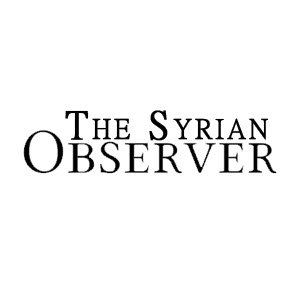It is well known that the Syrian Democratic Forces (SDF) cooperate with the Russian forces in the east of the Euphrates and other parts of northern Syria. However, the SDF is considered a main ally of the US.
Since the beginning of the year, the US has sent about 14 military convoys to the SDF-controlled areas in northern and eastern Syria. In conjunction with that, Russia sent reinforcements to the same areas to maintain de-escalation in the region, taking advantage of the tension between the regime, the SDF, and the Turkish forces.
A Kurdish news site revealed the escalation of the crisis between the SDF and the Russian forces in northern and eastern Syria.
Basnews quoted an unidentified Kurdish source as saying that “after the Russian forces withdrew from the observation points in the towns of Ayn Issa and Tell Tamer, a meeting took place between Russian officers and soldiers from the SDF about the recent tension between the two sides.”
The source added that during the meeting, the Russian officers asked the SDF not to launch attacks on the Turkish army and opposition factions from locations close to the Russian observation points because this would expose Russian soldiers to danger in Ayn Issa and Tell Tamer.
“The Russian forces have asked the SDF to hand over some of the villages around the Russian observation points in the contact areas with the Turkish army, to the Syrian regime forces, and to withdraw to the south of the M4 international highway, to calm the tension in the areas of contact with Turkey,” the source added.
According to the source, the SDF will not yield to blackmail and Russian dictates by handing over the areas of contact with the Turkish side — including the town of Ayn Issa and its villages — to the regime and withdrawing south of the M4 international highway.
Moreover, the SDF rejected the Russian request to build military bases in the border areas with Turkey, especially in the vicinity of the border triangle, east of the city of Qamishli between the Kurdistan region of Iraq, Turkey, and Syria.
The researcher at the Asharq Center for Studies, Saad al-Shari, said that the relationship between SDF forces and the Russian forces is merely a field relationship. He explained in his interview with Baladi News that the Turkish army and the Syrian National Army (SNA) factions launched the Peace Spring Operation against the SDF following a Turkish-US understanding, which prompted the SDF to seek the help of the regime and Russia. Russia then quickly entered the area, deployed forces to the east of the Euphrates, and began preparing the airport to become a military base. According to Shari, this is how a field relationship began between the two sides, an alternative to the political relationship in which Russia attempted to play a mediating role with the regime.
The Syrian researcher added that the relationship between the US and the SDF is based on fighting terrorism. This was confirmed by the recent statements in which Washington declared its commitment to fighting the Islamic State (ISIS) and it not be responsible for protecting the SDF oil.
He added that the SDF is trying to divide the area east of the Euphrates between the two forces. Moreover, US forces have been concentrating their bases east of Hassakeh and Qamishli all the way to the Euphrates River in Deir-ez-Zor, while the Russian forces are deployed close to the demarcation lines with the Turkish Peace Spring Operation area. He said that the eastern Euphrates region is emblematic of the conflict in Syria as most countries interfering in Syrian affairs can be found there, despite it being too small a region to accommodate all foreign powers — from the US, Russia, Turkey, and France.
Ibrahim al-Habash, editor-in-chief of the Al-Khabour website, which covers news from the northeastern region of Syria, believes that the relationship between the SDF and Russia extends beyond east of the Euphrates — where Russia protects the areas of control of SDF north of Aleppo and maintains a channel of communication with the regime, keeping the neighborhoods under SDF control in Aleppo safe.
Habash said that Russia contributed to stopping Operation Peace Spring in northern Syria against the SDF. Additionally, Russia has been conducting patrols in the region to ensure the collapse of the agreement to suspend Operation Peace Spring and calm Turkish concerns. This is why SDF forces are keen to continue cooperating with Russia, especially since the US has stressed, on more than one occasion, that its support for the SDF is linked to the war on ISIS. The SDF finds this concerning as they would not want to put all of their eggs in one basket. Habash added that a good, normal relationship with Russia means that the SDF could secure its way back into the arms of the regime, which supported and financed the SDF against the Free Syrian Army (FSA) factions, even before the emergence of ISIS and the formation of the global coalition to defeat it.
This article was translated and edited by The Syrian Observer. The Syrian Observer has not verified the content of this story. Responsibility for the information and views set out in this article lies entirely with the author.


